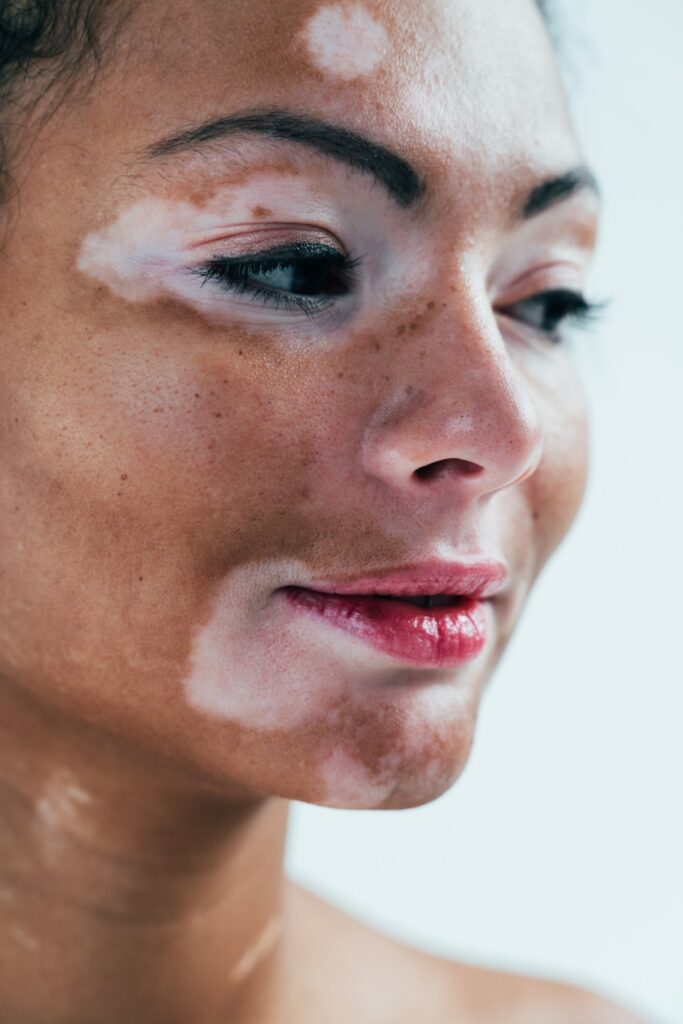Home / SKIN PIGMENTATION DISORDERS
Skin Pigmentation Disorders
Discover the path to skin confidence with our compassionate treatments for melasma, vitiligo and tinea versicolor at Deseret Dermatology
Skin Pigmentation Disorders
Discover the path to skin confidence with our compassionate treatments for melasma, vitiligo and tinea versicolor at Deseret Dermatology
Every person’s skin is uniquely beautiful, a reflection of their individuality and journey. At Deseret Dermatology, we believe that all skin is inherently beautiful when it reflects the comfort, health, and happiness of the individual it adorns.

Skin Pigment Disorders: Conditions and Treatments
If skin color irregularities bother you and you’re seeking options, we offer a variety of effective treatments. Melasma is a darkening of skin, usually on the face, that results from a combination of genetics, sun exposure, and hormones. Tinea versicolor is a common skin condition caused by yeast overgrowth, resulting in discolored patches on the skin. Vitiligo is a skin disorder characterized by the depigmentation of the skin, resulting in patches that can range from tiny spots to large, widespread areas. Many other skin pigment disorders can occur, including large birthmarks, scars, and post-inflammatory skin color change. We understand the challenges these conditions present, and we’re here to provide tailored treatment options including oral and topical medications and skin micrografting. Our goal is to help you regain your confidence and achieve great looking skin.
Your Journey to Skin Confidence Starts Here
Don’t let skin pigmentation disorders define your self-esteem. Contact us at Deseret Dermatology to schedule a consultation for effective tinea versicolor and vitiligo treatment. Our compassionate team is here to provide the support and expertise you need on your journey to healthier, more evenly-toned skin.
FAQs
Vitiligo is an autoimmune disorder where the body’s immune system attacks and destroys melanocytes, the cells responsible for producing skin pigment. The exact cause is not fully understood, but it is believed to involve a combination of genetic, environmental, and autoimmune factors.
While there is no known cure for vitiligo, various treatments are available to manage and improve the condition. These treatments aim to reduce further depigmentation and repigment the affected areas. The effectiveness of treatment may vary from person to person, and it is essential to consult a dermatologist to discuss the most suitable approach for your specific case.
Melasma is a frustrating condition that can’t be cured in most cases, but it can often be controlled. All people who suffer from melasma should carefully protect their skin from excess sunlight. Melasma-affected skin tans much more easily, and looks worse after you are in the sun. We can help guide the other steps that can help your melasma, including prescribing combination creams that help normalize the pigment in the affected skin.
Yes, in a strict sense, the yeast can be spread from one person to another, but he full answer is more complicated. Discoloration only occurs when the yeast overgrows. Some people are naturally resistant, and will never carry the yeast. Others may carry it and spread it without having symptoms. Some people are very susceptible, and get versicolor over and over again. So it’s hard to say it is contagious in the traditional sense.
Tinea versicolor may be managed and prevented through various measures. To reduce the risk of recurrence, it is advised to use antifungal shampoos and soaps, maintain good hygiene, and control excessive sweating, as moisture can contribute to yeast overgrowth. Dermatologists can provide guidance on prevention strategies and recommended products to help manage the condition.
Deseret Dermatology performs melasma and vitiligo treatment services for Saratoga Springs, Lehi, American Fork, Eagle Mountain, Draper, Bluffdale, South Jordan, and Riverton, Utah.
